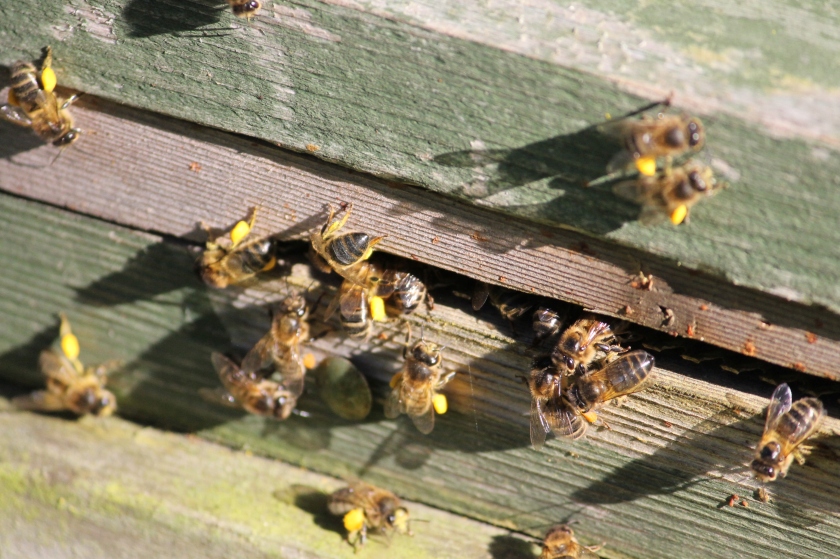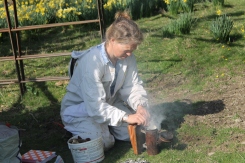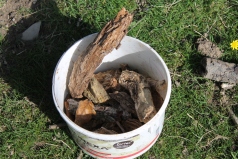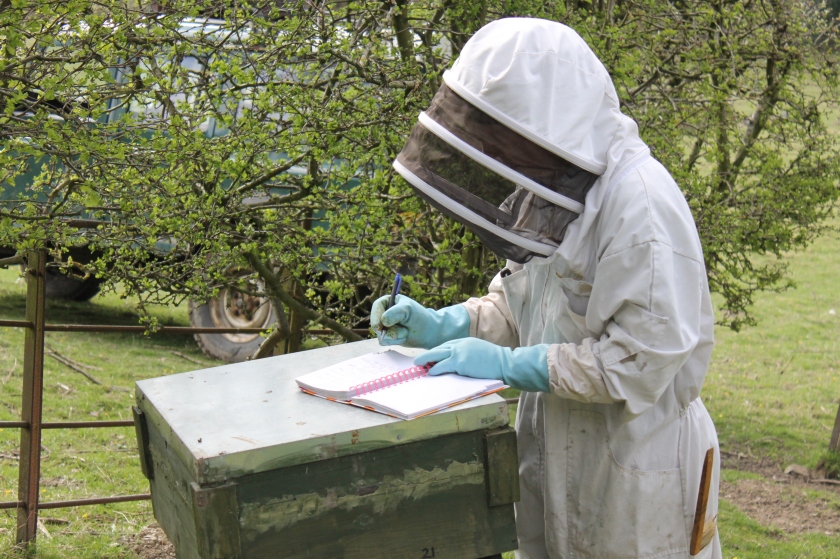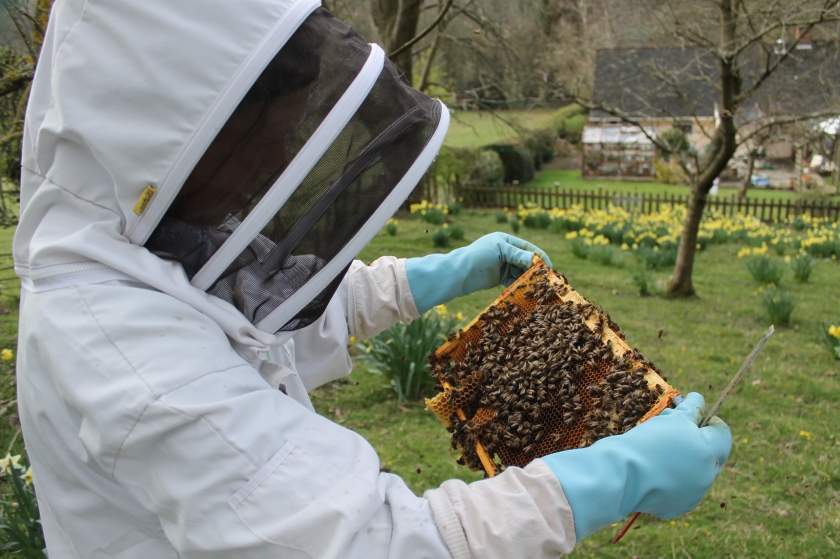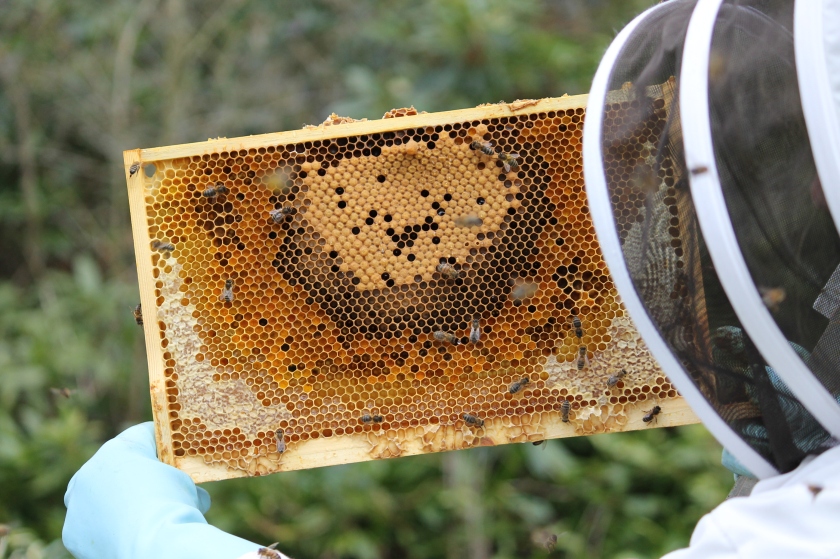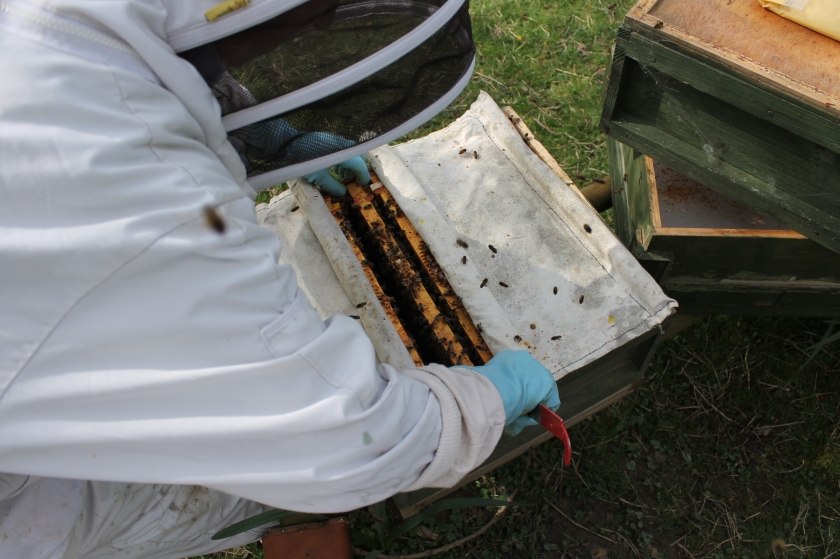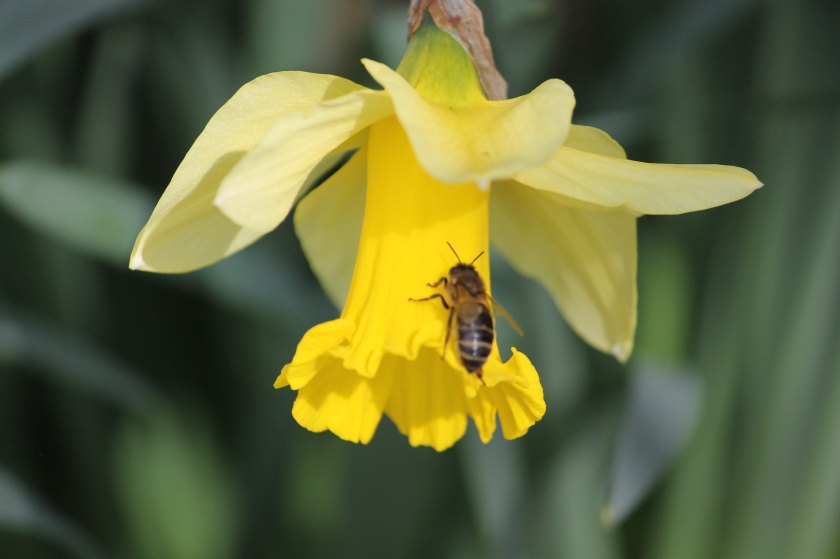Joy of all joys, on Easter Saturday, just after my parents had arrived from Edinburgh, the clouds cleared, the sun came out and the temperature soared. High pressure moved in and gave the UK a well-deserved soak in solar rays.
This is what the bees had been waiting for. It was exciting to sit right beside a side entrance on Easter Day and observe the bees, powdered yellow with pollen, piling into the hive with huge pollen sacks of different coloured pollens. Providing you don’t sit right in front of the entrance, but to the side, you can be very close and safe,because the bees haven’t been disturbed and are only intent on going about their work.
Once the weekend guests had gone home it was time to start on the first inspection of each hive. 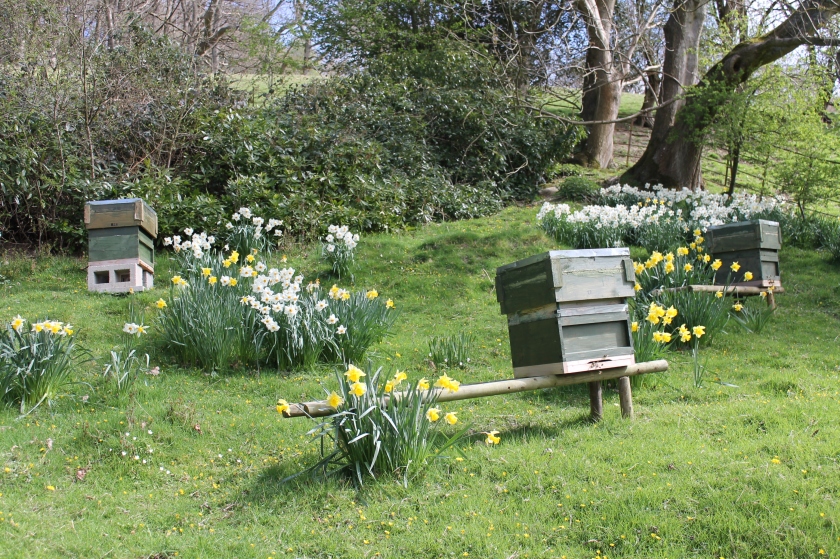
You need to get your smoker going well. In fact, I hardly use any smoke at this time of year, but if the bees do get out of hand, smoke is a vital tool in enabling you to get the hive back together quickly. Getting the smoker going well depends on having lots of dry fuel. I pick up pieces of dry rotten wood and pine cones whenever I see them and keep them in a bin in the work shop. Nothing smells sweeter nor is less adulterated.
Next check your notes for each hive before you open it and after the inspection make more notes.
- Hive number
- Date
- Did you see the queen? Is she marked? If not, mark her with a special pen putting a dot on her thorax whilst holding her still with a queen cage.
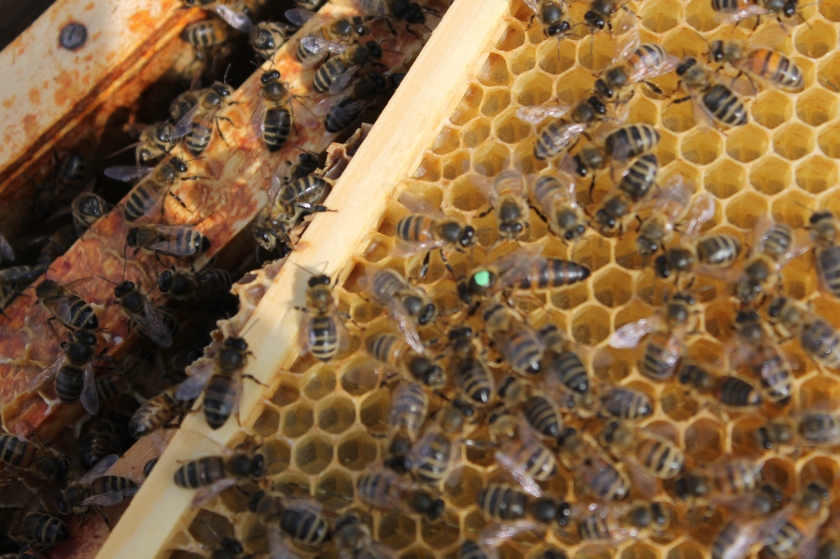 Green is the colour for last year and all 2015 queens will be marked red.
Green is the colour for last year and all 2015 queens will be marked red. - Did you see eggs, unsealed brood and sealed brood? This would indicate a healthy, laying queen even if you didn’t see her.
- Did you see plenty of stores and pollen?
- Has the queen got enough space to lay? I had several hives which were chocca with stores and had to remove a frame of stores and replace with a drawn, empty frame for her to lay on.
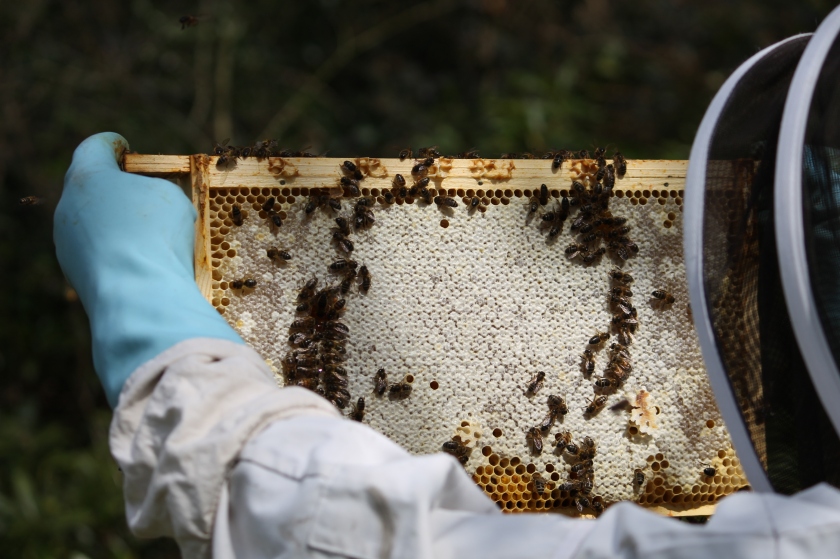 This frame is full of stores.
This frame is full of stores.
A Few Helpful Hints
The first inspection of the season is often hampered by the frames being stuck together with propolysis which is brown, sticky resin gathered from tree bark and buds to fill holes. It is the bee polyfilla and very handy for keeping out cold draughts in the winter. It gets stuck to your gloves and everything feels sticky. Try to ignore this and take out each frame, preferably with the sun behind you to light up the cells with eggs, brood, pollen and stores and have a good look.
This frame has a brood pattern typical of the native British bee.You can see the sealed brood in the middle with unsealed brood round about,flanked by yellow pollen packed into cells and round the edge,stores.If the weather turns cold the bee food,pollen and honey are close to hand.
Try to avoid scraping and squishing bees as this quickly spreads alarm and amazingly the bees have a corporate memory and the next generation will remember if the last generation were treated shabbily.
I use covering cloths to keep all the frames covered and quiet except the one I am lifting out.
Don’t panic if you can’t find the queen to mark her…there is always next time and always the odd, elusive queen that can’t be found all season.
There is no point in pulling a hive to pieces if the weather is not warm [15 degrees C plus] and reasonably still and sunny….you are better to wait till the next day.
Evidently bees don’t like after shave,perfume and the smell of alcohol.
This wax,attached onto the outer wall of a dummy board,was full of honey last autumn.Now the stores have been consumed and we scraped the wax off to render before re-inserting the dummy board.

